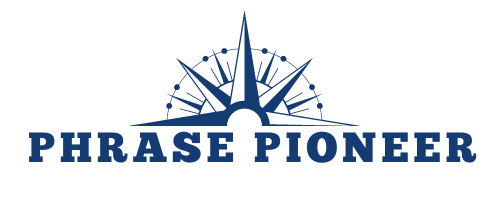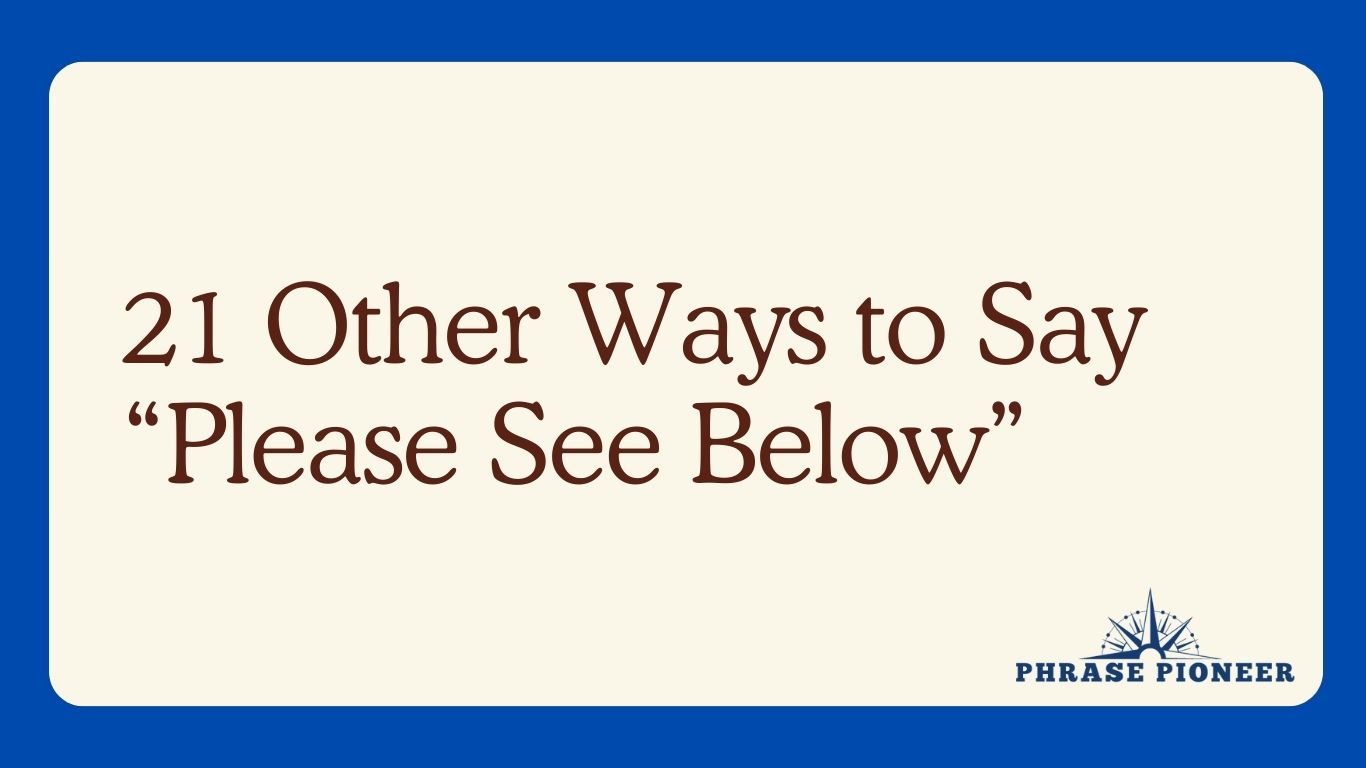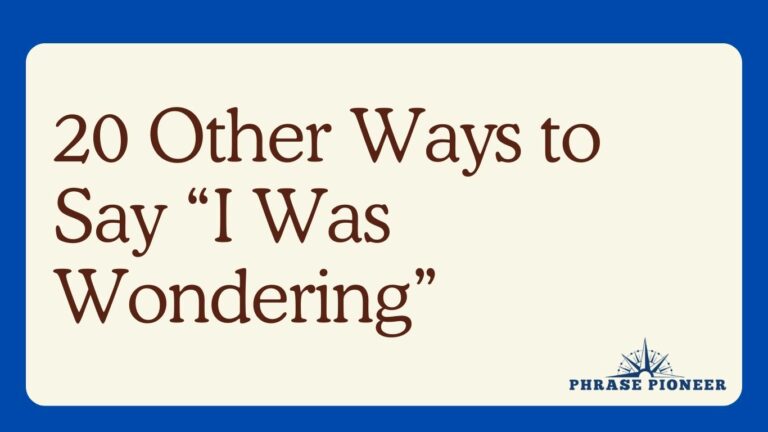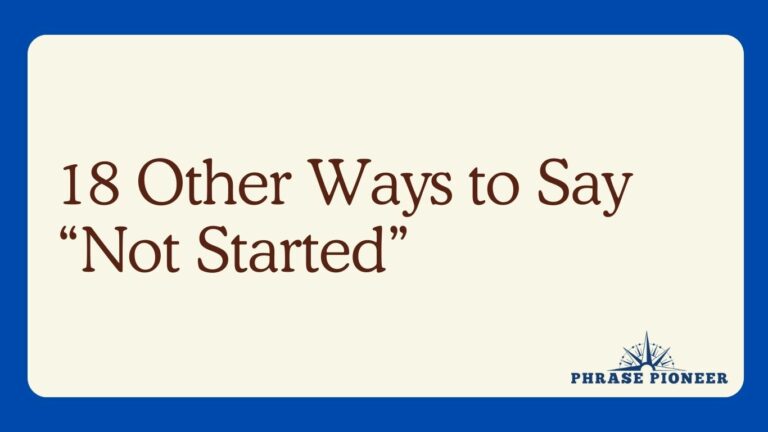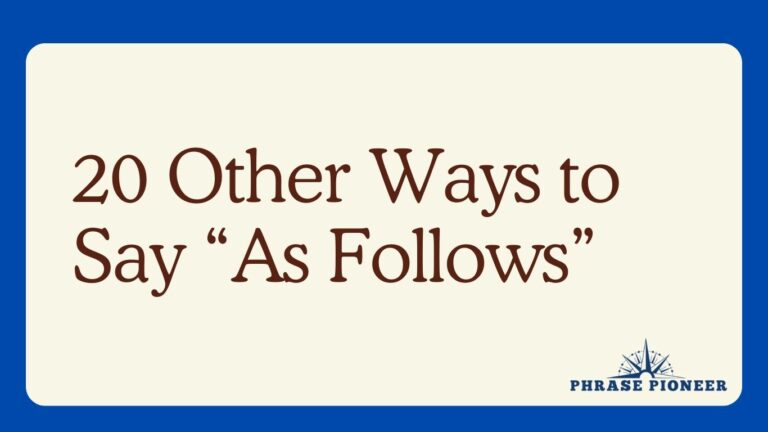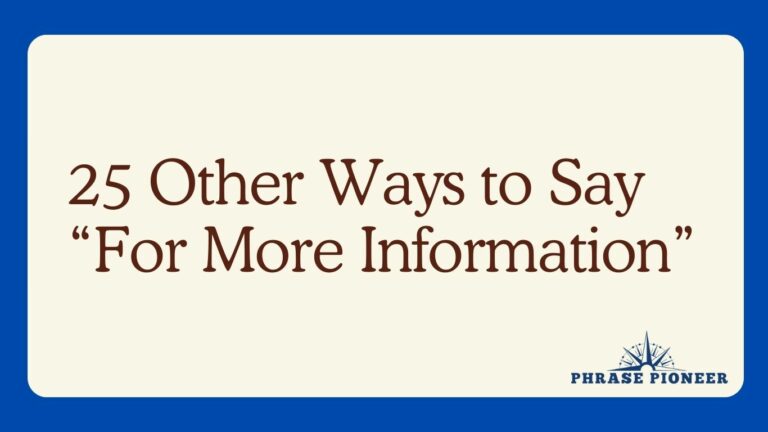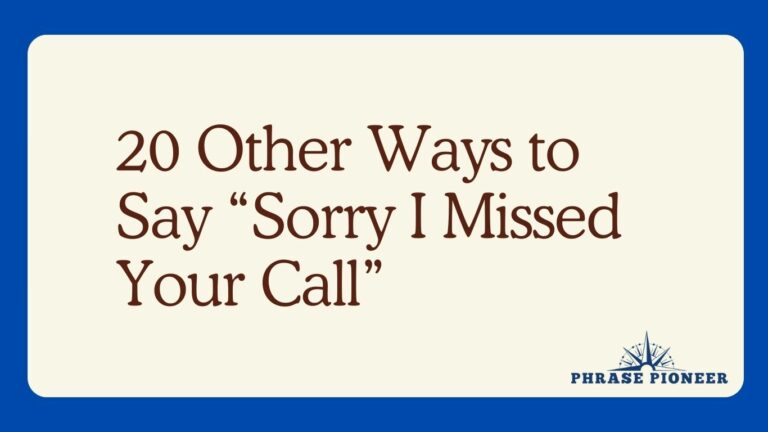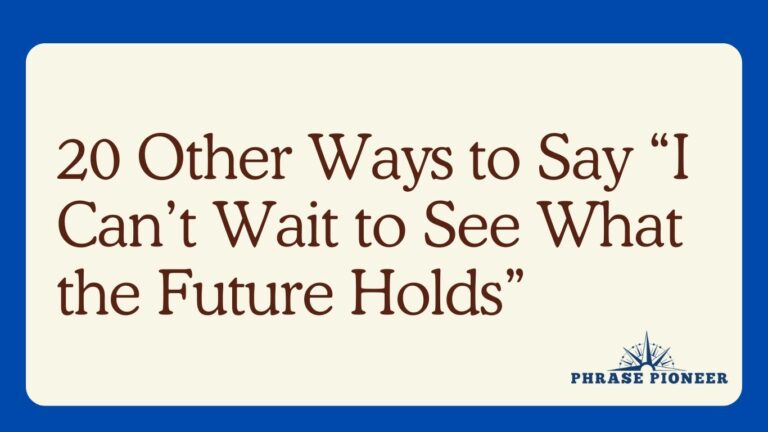21 Other Ways to Say “Please See Below”
The directive “Please see below” is commonly used in written communication to direct the reader to information that follows.
While effective, repeating the same phrase can become monotonous. Expanding your repertoire with varied expressions makes your writing more dynamic and helps maintain the reader’s attention.
Here are 20 alternative ways to say “Please see below,” allowing you to articulate a request to review subsequent content with fresh and engaging language suitable for different contexts.
Formal Directions
In professional or academic writing, it’s often necessary to guide the reader to additional information in a formal and respectful manner.
1. I kindly direct your attention to the following details.
- Example: “For a comprehensive breakdown of the costs, I kindly direct your attention to the following details.”
- Explanation: This phrase suggests politeness and respect while instructing the reader to consider the forthcoming information.
2. The pertinent information is outlined below.
- Example: “The pertinent information regarding the merger is outlined below for your review.”
- Explanation: Asserts that the information below is relevant and worth noting.
3. For your convenience, I have provided further clarification beneath this paragraph.
- Example: “For your convenience, I have provided further clarification beneath this paragraph regarding the policy changes.”
- Explanation: Indicates that the following information is specifically structured to ease the reader’s understanding.
Clarifying Additional Information
When the information below expands upon or clarifies what has been discussed, use one of these phrases.
4. Please view the additional commentary below for more clarity.
- Example: “Please view the additional commentary below for more clarity on the procedures.”
- Explanation: Invites the reader to look at further information that explains the content more comprehensively.
5. For further elucidation, refer to the segment below.
- Example: “The forecast’s intricacies may require closer examination; for further elucidation, refer to the segment below.”
- Explanation: Encourages the reader to check the following section for more in-depth explanation.
6. A detailed exposition follows for your perusal.
- Example: “A detailed exposition on the study’s results follows for your perusal.”
- Explanation: Communicates that an extensive description or clarification is provided next.
Casual Indications
In email exchanges with peers or in informal settings, a more casual tone might be appropriate and friendly.
7. Just scroll down for the good stuff!
- Example: “We’ve got some exciting updates this week—just scroll down for the good stuff!”
- Explanation: A lighthearted way to pique the reader’s interest about what’s to come.
8. Check out what’s written below.
- Example: “Not sure how to use your benefits? Check out what’s written below.”
- Explanation: A laid-back command prompts the reader to continue reading for more information.
9. Take a peek below!
- Example: “Take a peek below to see the latest features in our app!”
- Explanation: Presents a friendly and inviting suggestion to review the content that follows.
When Introducing Data or Evidence
Introducing supplemental materials such as charts, graphs, or concrete evidence, demands clear instruction to guide the reader.
10. The relevant figures are depicted in the section below.
- Example: “To illustrate the trend, the relevant figures are depicted in the section below.”
- Explanation: Guides the reader where to find supporting numbers or images.
11. Please review the data that follows.
- Example: “Please review the data that follows, which supports our market analysis.”
- Explanation: A formal request to consider the information below that lends credibility to the previous statements.
12. Below, you will find substantiating evidence for the points raised.
- Example: “Below, you will find substantiating evidence for the points raised in our discussion.”
- Explanation: Alerts the reader that the subsequent content provides proof or support for earlier claims.
Enforcing the Sequence of Content
When it’s important to read the document in sequence, these phrases emphasize the correct flow of information.
13. Moving on to the next section, you will discover…
- Example: “Moving on to the next section, you will discover our responses to your key concerns.”
- Explanation: Indicates a transition to a new section that merits the reader’s focus.
14. Subsequently, I have detailed the necessary steps.
- Example: “Subsequently, I have detailed the necessary steps for the installation process below.”
- Explanation: Provides a smooth lead-in to instructions or procedures outlined later.
15. Following this message, please find…
- Example: “Following this message, please find a curated list of our most frequently asked questions.”
- Explanation: Functions as a prelude to content that will appear immediately after the current text.
Invitations to Explore Additional Content
To draw readers in and encourage them to see what’s next, use these inviting expressions.
16. Continue reading below for more insights.
- Example: “Our team has compiled a report on recent trends. Continue reading below for more insights.”
- Explanation: Tempts the reader with the promise of gaining deeper understanding.
17. Further down, we delve into the specifics.
- Example: “We’ve outlined the project goals at a high level, but further down, we delve into the specifics.”
- Explanation: Prepares the reader for a more detailed examination that’s coming up.
18. Scroll below to uncover additional details.
- Example: “We have an offer for you! Scroll below to uncover the additional details.”
- Explanation: Suggests that there’s valuable information to be discovered below.
Requests for Reader Engagement
Sometimes, the information below requires action from the reader. These phrases can be employed when interaction is needed.
19. Please action the steps outlined beneath this advisory.
- Example: “To ensure a seamless transition, please action the steps outlined beneath this advisory.”
- Explanation: Not only points to the information below but also calls for the reader to act upon it.
20. Your feedback on the appended questions would be appreciated.
- Example: “As we seek to improve our services, your feedback on the appended questions would be appreciated.”
- Explanation: Guides the reader to questions or a survey that’s presented later in the document.
Leading into a Conclusion
When the information below serves as a concluding part of the communication, these phrases can effectively signal closure.
21. Below, we summarize our main points for your reference.
- Example: “Below, we summarize our main points for your reference and call to action.”
- Explanation: Indicates that the following section contains summarized information as a capstone to the communication.
Conclusion
Directing someone to “Please see below” ensures important information doesn’t go unnoticed, but varying your language can make your communications more engaging, persuasive, and clear.
The 20 alternatives provided here allow you to instruct the reader with specificity and a tone suitable to the situation—a vital component of effective written communication.
Whether your need is for formality, an enticing lead-in, a call to action, or a gentle guide to the next steps, using these diverse expressions will ensure that your messages are both dynamic and considerate of your reader’s experience.
